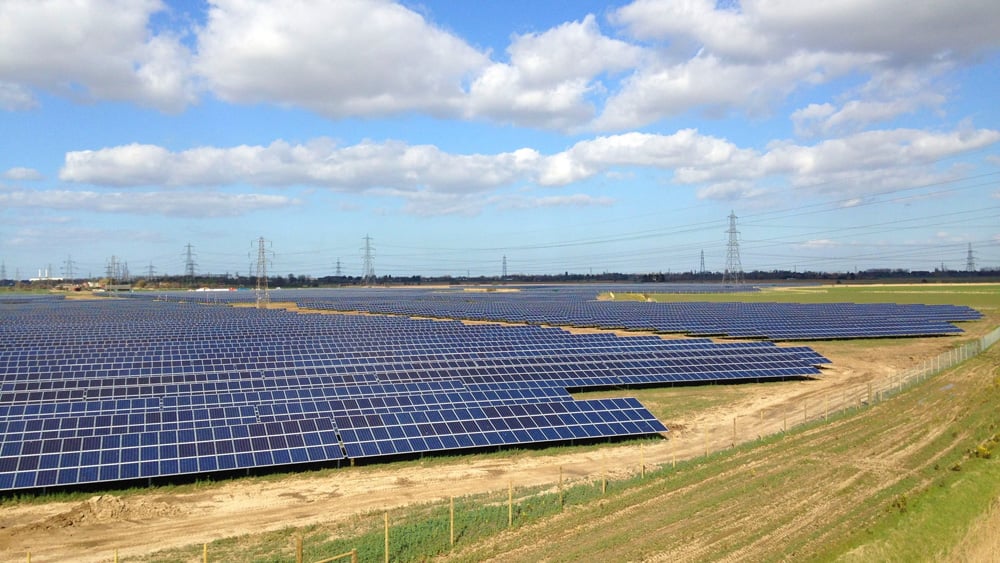
Its response to removal of subsidies for onshore technologies and the growth of activity in secondary transactions and PPAs has seen the UK go up four places in the latest ranking. Image: Baywa r.e.
The UK has rejoined the top ten most attractive countries for investment in renewables according to Big Four consultancy EY’s latest index, marking the first increase in its placing since 2013.
EY’s renewable energy country attractiveness index (RECAI) has placed the UK in tenth place, up four places from its last ranking in October 2016.
Despite the uncertainty around last year’s Brexit vote and the calling of a snap election to take place on 8 June, the UK owes its increased ranking to its response to the removal of onshore renewable subsidies for wind and solar PV.
Phil Dominy, assistant director at EY and special advisor to the RECAI report, told Solar Power Portal: “We've refreshed all of the data sets behind [the index] and we felt that basically the situation was stabilising here in the UK.
“It's in a new world of post-subsidy for onshore wind and solar PV but we feel that the market is responding quite well to that. Investors are still attracted very much to UK assets.”
He added that this interest was resulting in a lot of activity in the secondary market as large funds but up operational and new build assets, which has been seen particularly in the solar sector. However, Dominy also noted a recent growth of proposals for subsidy free projects.
“At the moment there’re a lot of secondary transactions as opposed to primary build but I'm seeing a lot of subsidy free projects beginning to come across our desks for onshore wind and solar PV.
“The private wire market for solar is very much there, it’s not big but there aren't as many opportunities for grid based solar so you're looking at very specific opportunities for private wire,” he said.
He added that energy storage was also set to become a “big player” in the solar and onshore wind markets, with the technology described in the report itself as “the vital missing element in the struggle to enable the transition to clean energy”.
Despite the growing interest in the UK, Dominy said that the UK’s rise back into the top ten is unlikely to continue, calling it “a recovery rather than a sudden climb back up the rankings”.
The report explains that despite a “more settled” environment for UK renewables following repeated cuts to subsidy, there remains little clarity around the landscape after Brexit, while issues around renewable energy targets, subsidies and connections with mainland power markets persist.
However, it also points to the current government’s support for “less established” technologies through the Contracts for Difference mechanism, which will see £730m of annual support over three rounds.
This is not open to solar or onshore wind, meaning the UK’s capacity of offshore generation is expected to increase from 5.4GW in 2016 to 14.5GW by 2024, second in the world only to China which is thought to reach over 16GW.
Currently however, the UK remains well off its highest previous position of fourth in November 2013, with the eight intervening RECAI’s seeing the country fall successively down the rankings.

